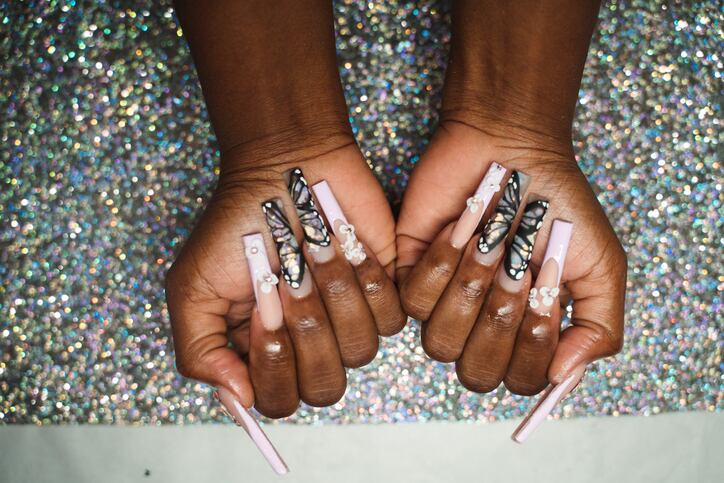Nail techniques based on acrylates have become more popular in recent years and has led to a noticeably higher frequency of sensitisation in nail technicians and users that has attracted the attention of governments and dermatology bodies.
New study assessed individuals with ACD
A new preliminary study that was published in Contact Dermatitis was conducted on 30 patients who were suffering with allergic contact dermatitis (ACD) caused by acrylates in nail techniques, who were patch-tested from September 2022 to March 2023 at the First Department of Dermatology and Venereology of Andreas Syggros Hospital, Athens, Greece.
The study aimed to assess cases ACD caused by acrylates in individuals with a mixture of either occupational or non-occupational exposure to nail techniques.
It assessed 30 female patients with ACD (15 users and 15 nail technicians and users) and found that the most common allergens were: 2-hydroxyethyl methacrylate (also known as HEMA), 2-hydroxypropyl methacrylate (HPMA) and ethyleneglycol dimethacrylate (EGDMA), which tested positive in all 30 patients.
It noted that patients (66.7%) had been exposed to dental procedures involving acrylates, before the onset of ACD. Nail technicians exhibited extensive skin lesions and 40% experienced ACD within the first year of work and 13.3% during their professional practice.
The results of the study have identified acrylates such as HEMA as potent allergens that “necessitate the implementation of safety measures for use in nail techniques.”
Allergy to methacrylates “could have have serious consequences for future medical care”
Acrylates, which are derived from acrylic acid are commonly found in cosmetic nail treatments. Ethyl acrylate is an adhesive to apply artificial nails and eyelashes, while the acrylic monomer ethyl methacrylate is used in most systems to mould the artificial nails and help them stick to the natural nail plate. These chemicals can be found in both salons and at-home use nail kits in many markets and it appears that direct contact and inhalation both pose potential hazards.
In April 2023, the UK government’s Office for Product Safety and Standards launched an investigation into reports that gel nail products caused users to develop life-changing allergies, after it saw a marked increase in the number of people being treated by dermatologists for allergy-related symptoms such as skin rashes and nails loosening and falling off. As well as some people reporting breathing issues in rarer cases.
Meanwhile, The British Association of Dermatologists (BAD), which had first released a warning about these products in 2018 after witnessing a steep rise in cases of allergic skin reactions linked to (meth)acrylate chemicals, spoke up again and noted that the trend of more people switching to at-home nail kits was riskier, due to the lack of experience the general public has with these products.
The BAD highlighted that sensitisation occurs when the uncured products come into contact with any part of the skin and that this is highly likely when people apply a product themselves without any professional knowledge.
If a product isn’t cured properly, this can also increase the risk of the user developing an allergy. The BAD also noted that latex and PVC gloves don’t offer any protection from these chemicals.
Dr Deirdre Buckley of the British Association of Dermatologists said: “It’s important that people are aware of the potential risks of artificial nail products, whether they are having them applied in a salon or at home. Nail technicians are particularly at risk and should wear nitrile gloves when applying the products, changing them every 30 minutes with a no-touch technique.
‘’Many people are unaware of potential medical and dental implications if they become sensitised to nail methacrylates. The same or very similar methacrylates are used in white dental fillings, enamel tooth coatings, orthopaedic bone cement, diabetic glucose sensors and insulin pumps. This can have serious consequences for future medical care.’’





